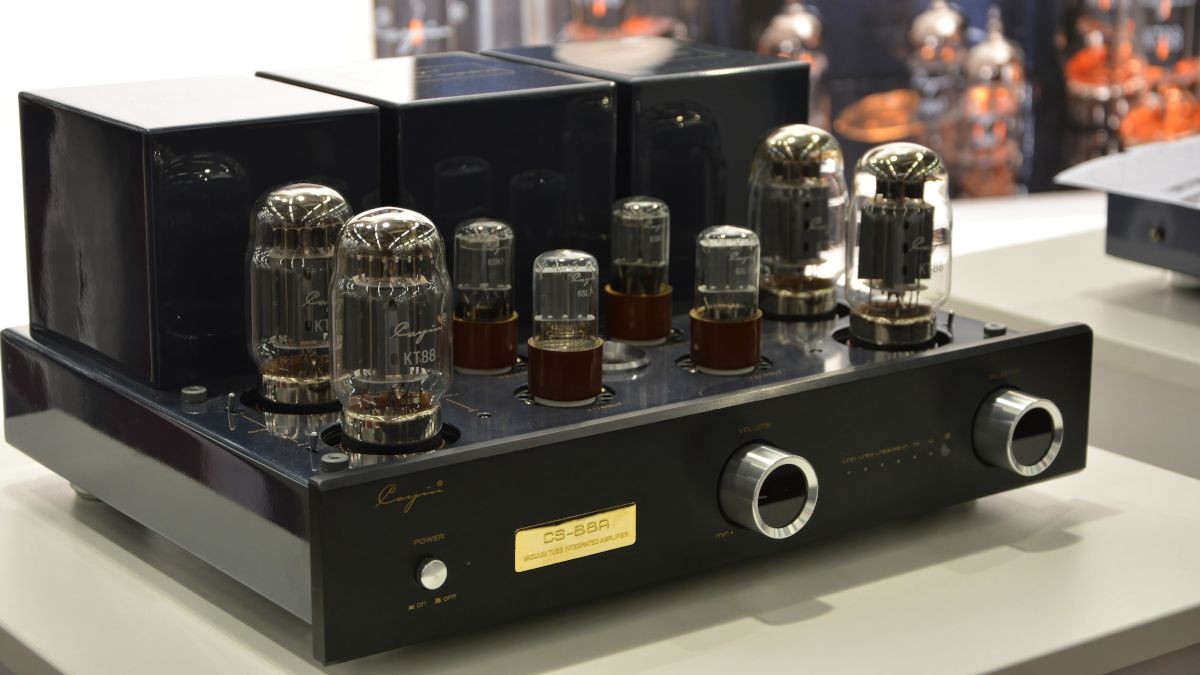Quick Links
Key Takeaways
An integrated amplifier combines a preamplifier and a power amplifier into a single device. Integrated amplifiers are common in A/V receivers and other audio equipment.
If you're shopping for stereo or home theater components, you might have heard the term "integrated amplifier." While these may sound like a specialized piece of equipment, they're more common than you may think and have some benefits over regular amplifiers.
How Amplification Works
Before we go into what sets integrated amplifiers apart, we need to understand how amplification normally works. And when talking about amplification, we need to talk about the signal chain. This is the route that the audio follows from your source device all the way to the speakers or your headphones.
The source could be a turntable, CD player, streaming network player, or even just your phone. Whatever the source is, the overall volume is very low and needs to be cranked up significantly before you hear it.
You could go directly from your source device to a power amplifier which would make it loud enough to go through speakers, but there's a problem. To start, you wouldn't be able to adjust the volume. You also wouldn't be able to adjust EQ or anything else.
Because of this, the first component that the signal from your playback device goes to is a preamp. This slightly raises the overall level of the signal to prepare it for the power amplifier, but a preamp can also handle volume controls and sometimes tone shaping.
Finally, after the preamp, your signal heads to the power amp. This is the final stage of amplification that raises the overall level of the signal loud enough to pump out of your speakers or headphones.
What Does an Integrated Amplifier Do?
So how do integrated amplifiers fit into all of this? For some audiophiles, their stereo system will be made up of several components. This would be the same signal chain we mentioned above, with a separate source device, preamp, and power amp, plus cables running between all of them.
An integrated amplifier is simply a device that combines the preamplifier and power amplifier into a single component. It's called an "integrated" amplifier because everything you need is packed into that single box.
An integrated amplifier has numerous advantages over choosing each component yourself. One of the biggest benefits is that you don't have to put any thought into how the components work together. The manufacturer has already taken care of that.
Another advantage is that because you have fewer cable runs, there are fewer chances to pick up noise. The components in an integrated amplifier might be physically close together, but they're often better separated electronically than in a more piecemeal system.
While an integrated amplifier is an entire category of stereo or home theater component, they also appear elsewhere. For example, an all-in-one music system that features a CD player and speakers contains an integrated amplifier. A/V receivers also contain integrated amplifiers.
Buying an Integrated Amplifier
When you see an integrated amplifier advertised, what you're getting is a preamp and power amplifier in a single box. These have a volume control, and they may have an EQ section, but this isn't always the case. As is common in the audiophile world, paying more money doesn't get you more features.
Generally speaking, a standalone integrated amplifier uses higher quality components than an integrated amplifier found in A/V receivers. That's because this type of integrated amplifier focuses only on amplification and sound quality at the expense of other features.
An integrated amplifier doesn't include a tuner as an A/V receiver would, and they typically have fewer inputs. The idea is that you can add your own source devices and use a switcher if necessary. This isn't always the case, however, as an integrated amplifier like the Yamaha A-S301BL features multiple inputs, onboard tone controls, and even a headphone jack.
Typically, integrated amplifiers are aimed at the audiophile and hardcore home theater system crowd. That said, if you're getting into vinyl and only setting up a turntable, an integrated amplifier may be cheaper and more useful than a stereo receiver.

